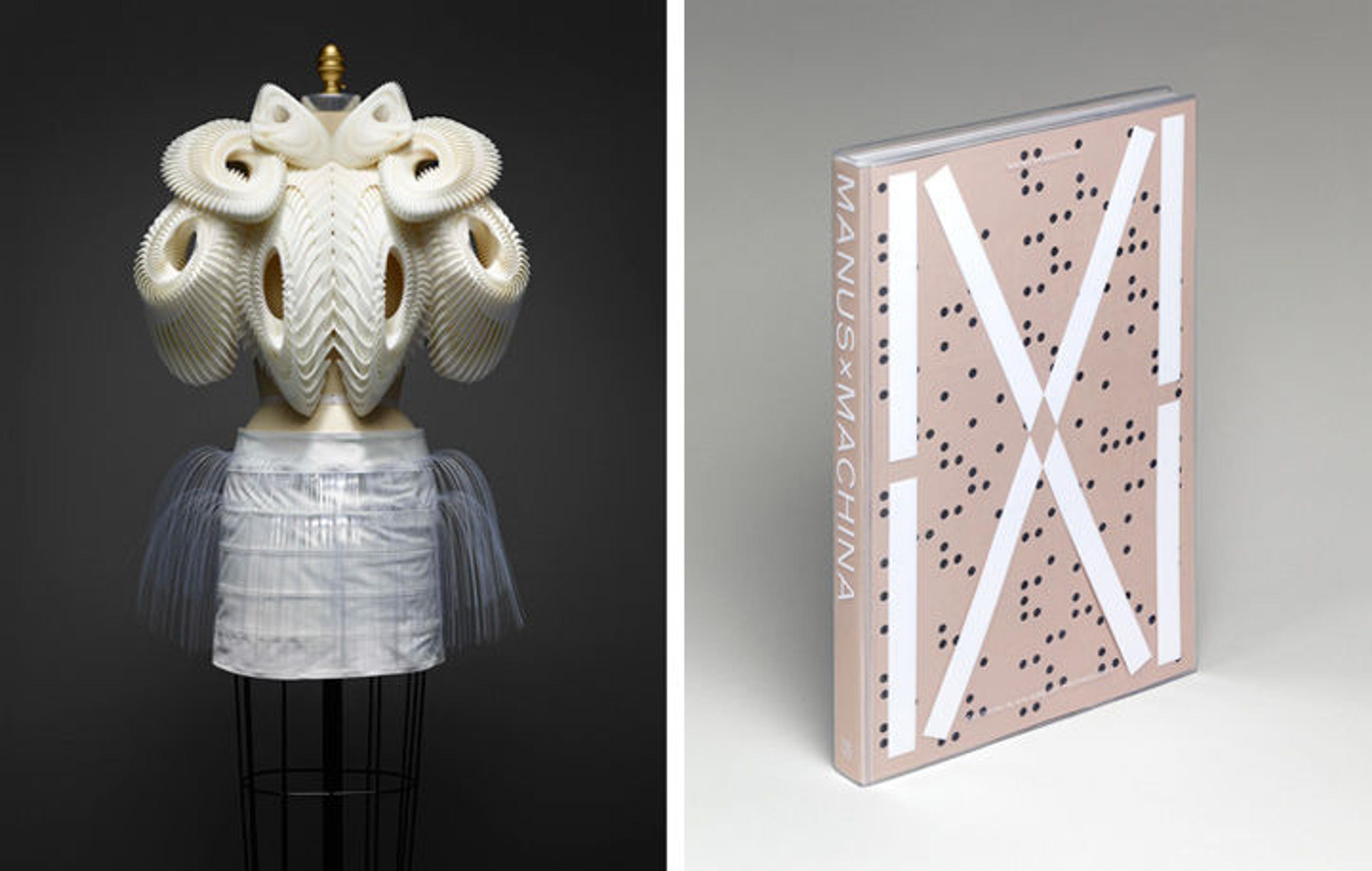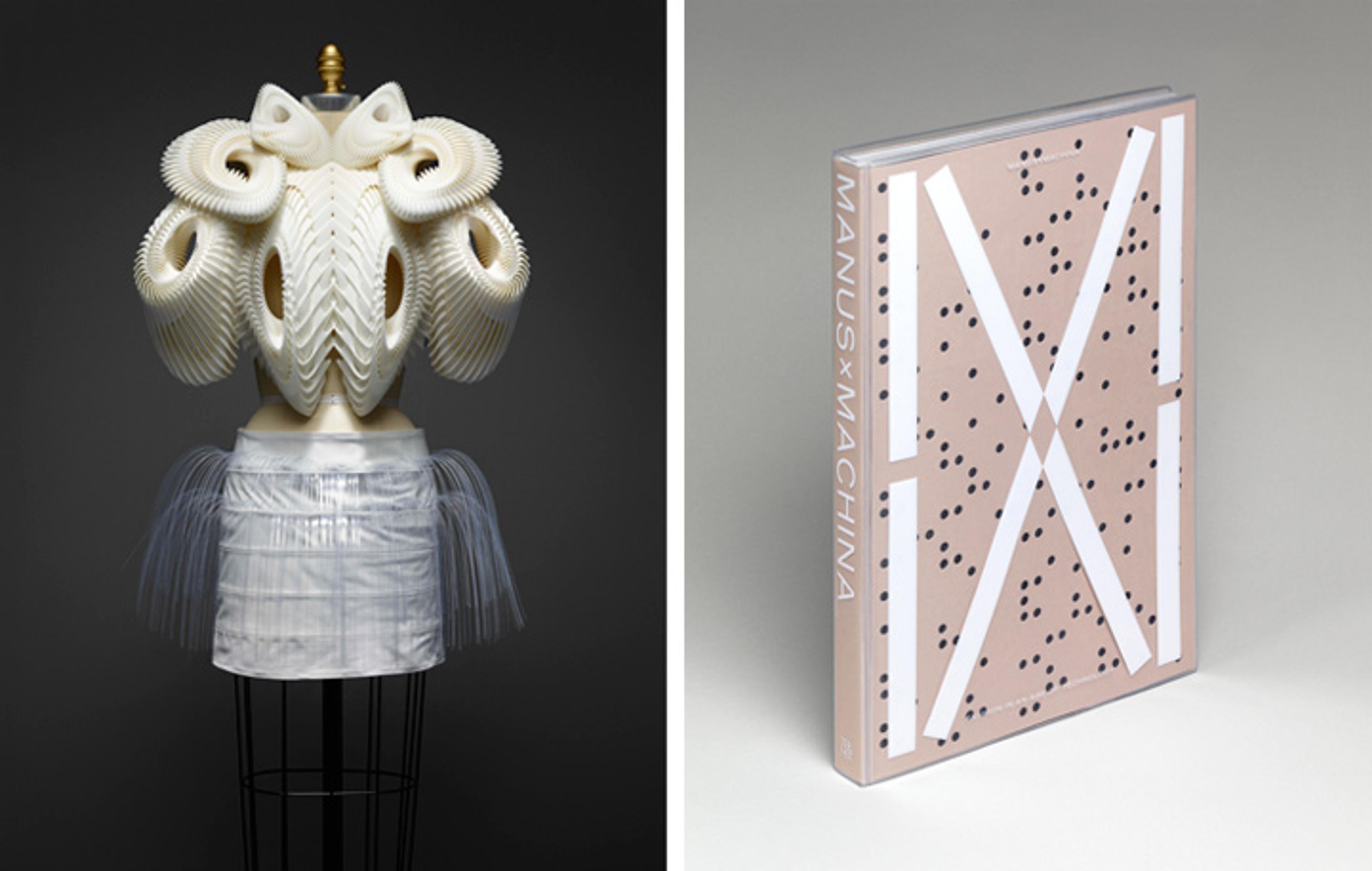
Left: Iris van Herpen (Dutch, born 1984). Ensemble, spring/summer 2010 haute couture. 3D-printed (SLS) white polyamide, machine-sewn white goat leather, and hand-cut acrylic fringe. The Metropolitan Museum of Art, New York, Purchase, Friends of The Costume Institute Gifts, 2015 (2016.16a, b). Photo © Nicholas Alan Cope. Right: Manus x Machina: Fashion in an Age of Technology by Andrew Bolton. Photos by Nicholas Alan Cope. Cover: PVC in 3 layers with transparent stiffener and opaque white silkscreen, high-frequency welds, and die-cut single-layer PVC flaps; hand-insert die-punched Kendal Manilla board. Interior: Favini Burano black paper (UV silver ink); Bindakote paper (cold stamp silver foil, UV inks); Gmund Shade paper; Gardapat Kiara and Arcoprint Milk papers (high-density CMYK ink); Smyth sew; Otabind. Photo by Peter Zeray
«The exhibition Manus × Machina: Fashion in an Age of Technology, open through August 14, 2016, traces the evolution of fashion from the founding of the haute couture through the onset of industrialization and mass production to the present day, when designers employ technologies such as 3D printing, laser cutting, and computer-generated weaving and patterns to create high fashion. In a similar vein, the exhibition catalogue pushes the limits of contemporary book design and production and, like the fashions in the show, uses a striking mix of hand ("manus") and machine ("machina") techniques.»
Each of the 90 ensembles in Manus × Machina has a caption that unpacks the "DNA" of the garment, noting what was made by hand and what was done by machine. In this post, I'll discuss the "DNA" of the book and share a behind-the-scenes look at its complex production.
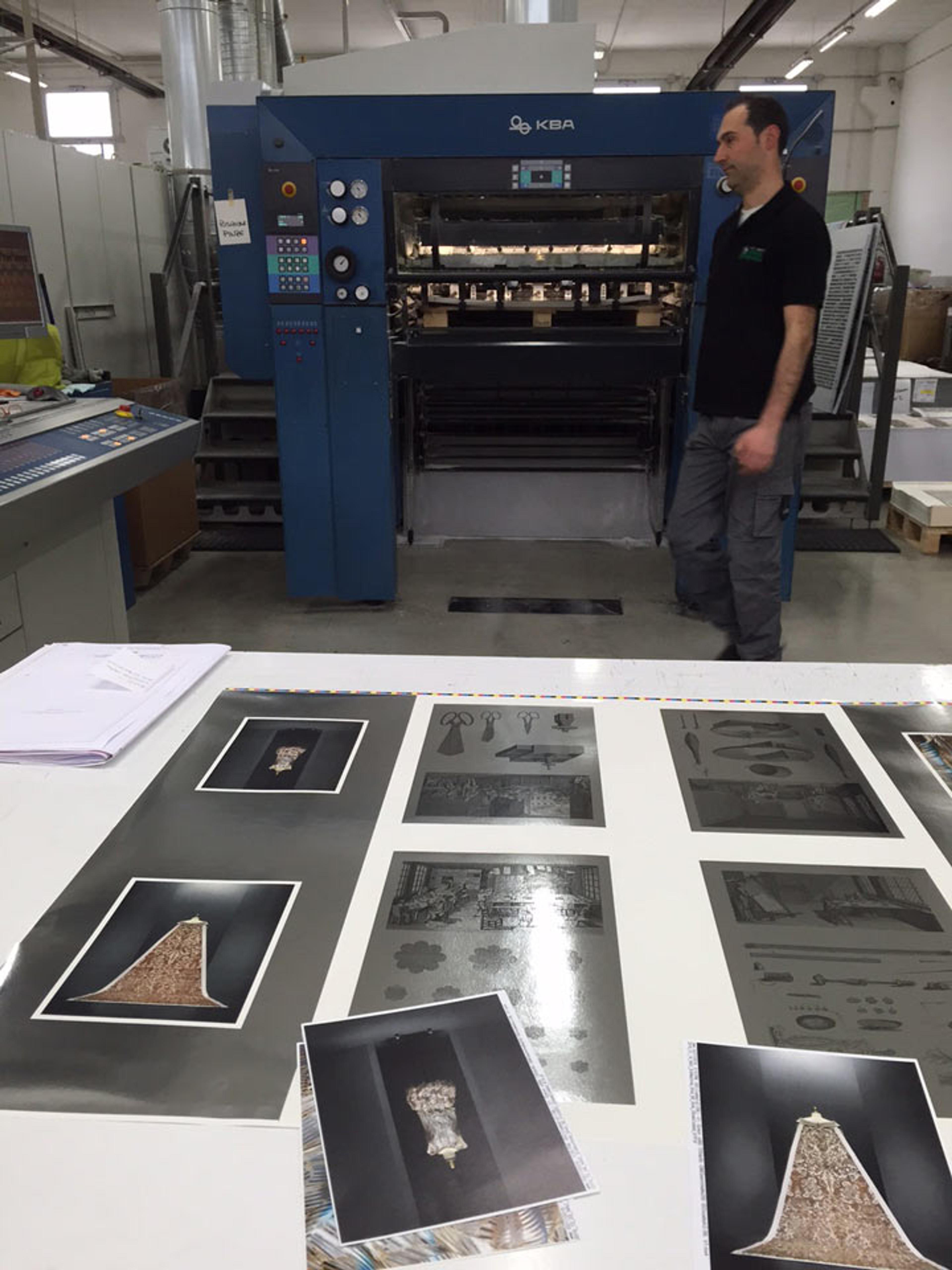
The UV-equipped offset press and printed sheets at a printer in Padua, Italy. Photo by Gwen Roginsky
The production process begins at printers in Verona and Padua, in Italy. The printing press prints four colors of ultraviolet ink—cyan, magenta, yellow, and black—onto sheets that have already been stamped with silver foil. These high-quality inks react to ultraviolet lights inside the press, setting them almost instantly with the application of light energy.
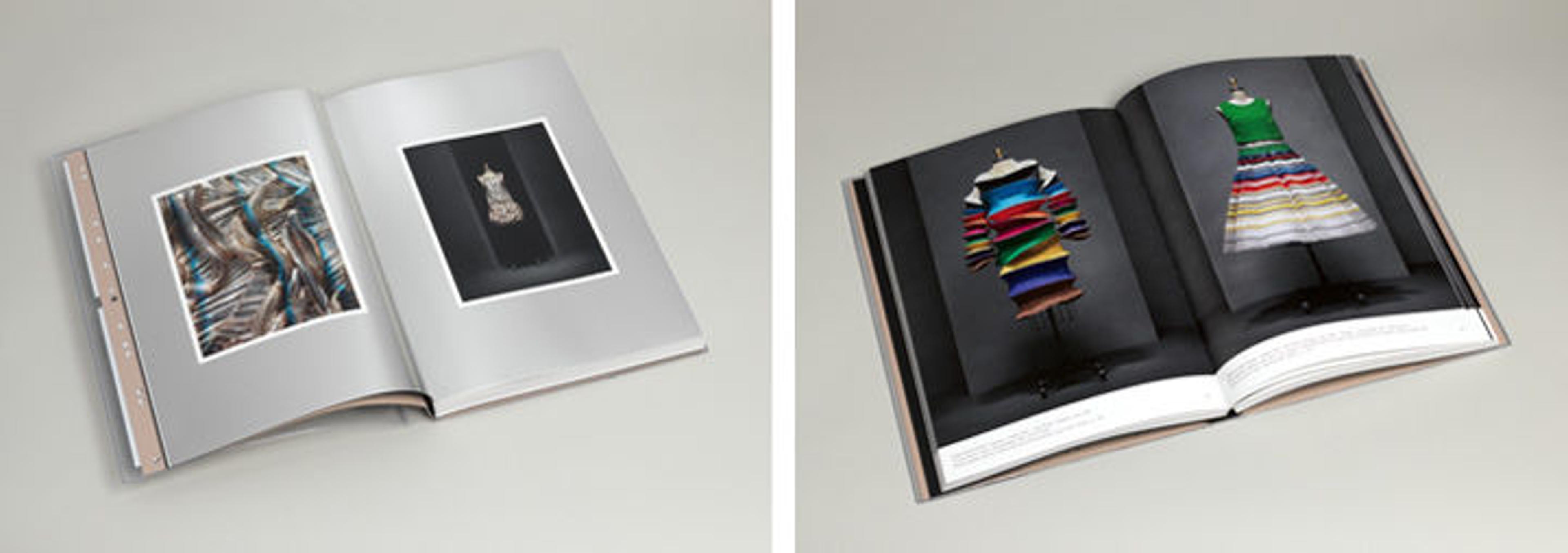
Two of the many types of paper and printing treatments found in the finished publication. It takes both machine precision and human judgment to create this high-quality catalogue. A combination of five types of paper and three printing processes create different effects in the interior pages of Manus × Machina. Photos by Peter Zeray
At the next stage of production, the printed sheets arrive at a bindery in Vicenza, Italy, where they are folded, cut, sewn, and bound. The bindery applies the interior covers made of die-cut board.
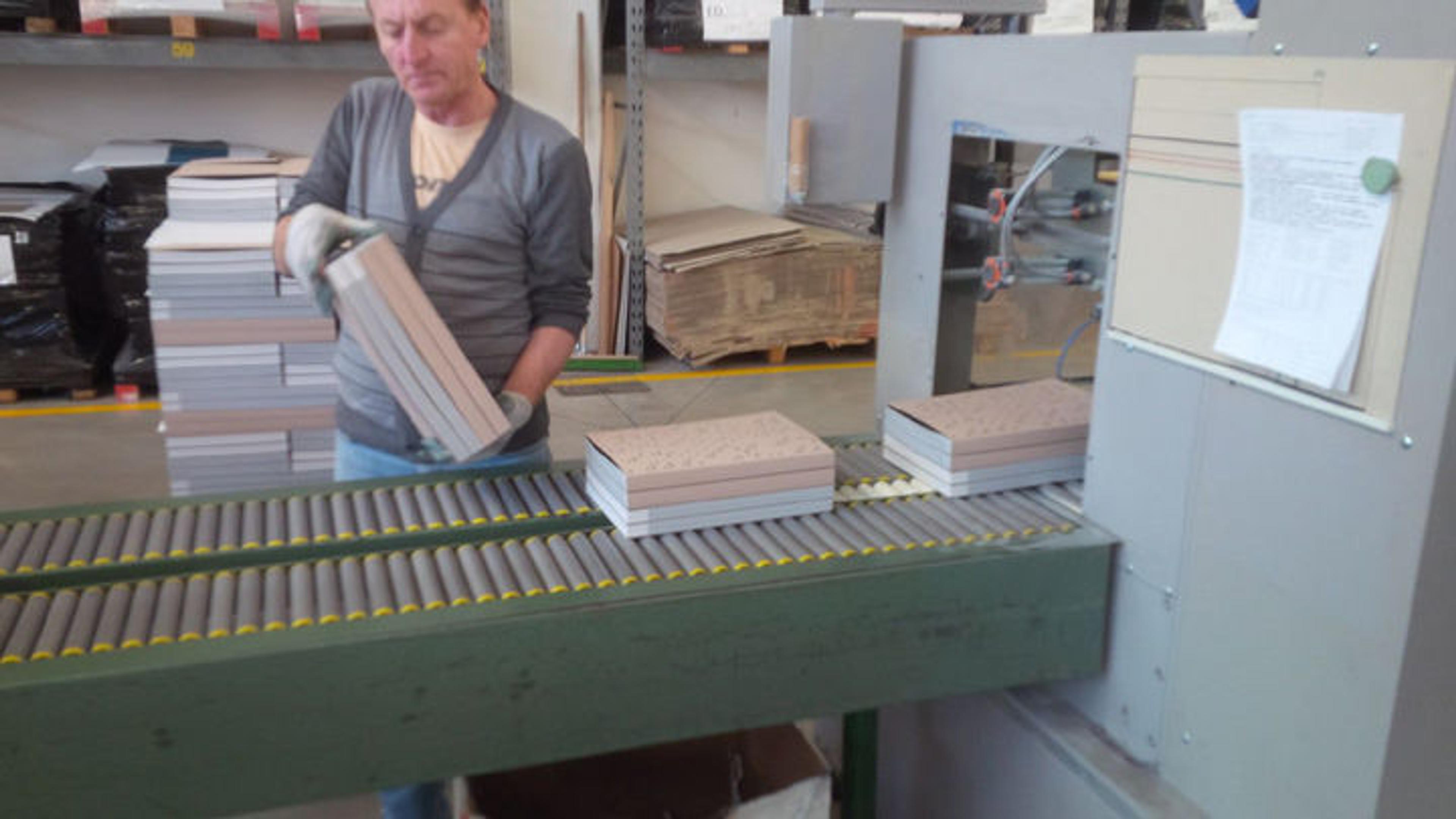
After the books come off the mechanical bindery assembly line, they are inspected and stacked by hand in preparation for insertion into their PVC plastic covers. Photo by Gwen Roginsky
The book's cover embodies the subject of the catalogue and exhibition by combining techniques done by both machine and hand. The inner cover is based on punch cards used in the first automated Jacquard looms, a 19th-century invention that mechanized the weaving of intricately patterned textiles. This is hand-inserted into the outer cover, which is made up of three sheets of plastic with machine-welded seams. The rigid middle layer of plastic in the front cover is screen-printed by hand, while the flexible outer layers protect the design and allow the book to open easily.
Manus × Machina also contains a second, removable book of interviews by Andrew Bolton, curator in charge of The Costume Institute, with 12 of the designers featured in the catalogue. The designers describe the creative approaches they use to reconcile their vision for their work with reality.
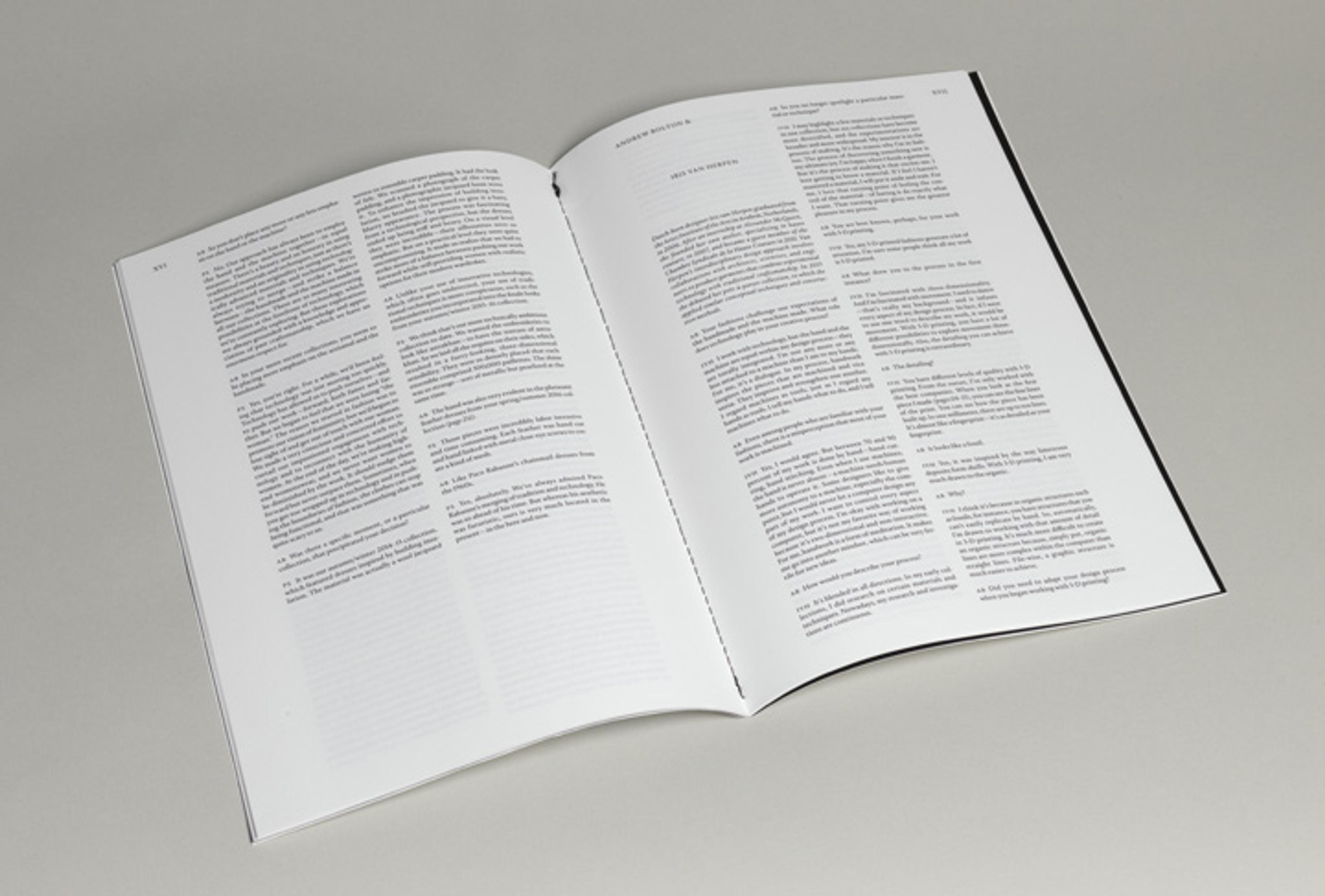
The finished interview book, featuring conversations with Sarah Burton (Alexander McQueen), Hussein Chalayan, Maria Grazia Chiuri and Pierpaolo Piccioli (Valentino), Nicolas Ghesquière (Louis Vuitton), Lazaro Hernandez and Jack McCollough (Proenza Schouler), Iris van Herpen, Christopher Kane, Karl Lagerfeld (Chanel), Miuccia Prada, and Gareth Pugh. Photo by Peter Zeray
The interview book features a flexible, high-tech Tyvek cover that references the Tyvek dress by Maison Margiela featured in the first section of the catalogue and prevents damage to the book as it is removed from the plastic flap. Tyvek is probably best known as the material used in shipping envelopes; this durable material allows for easy reading without the possibility of rips and tears.
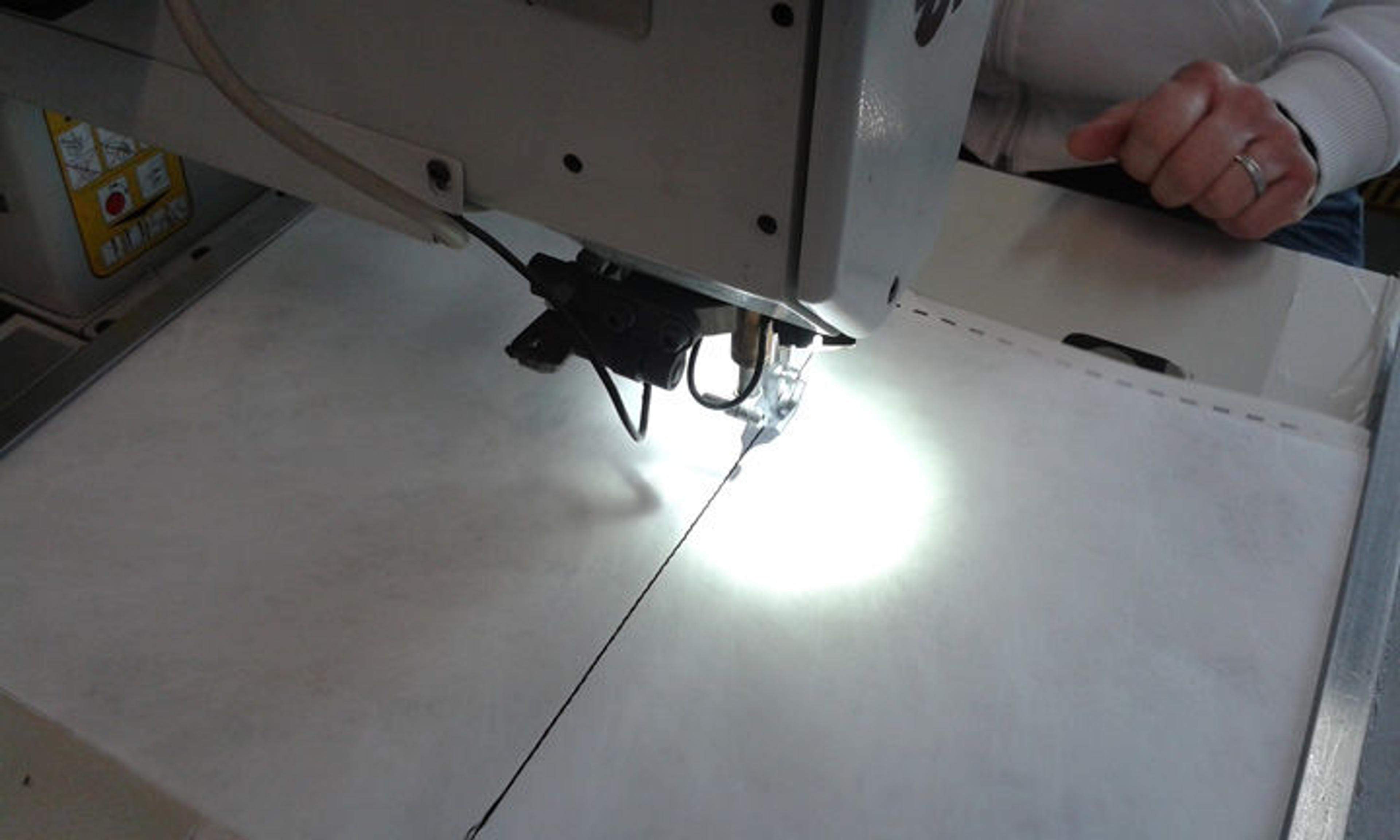
The Tyvek-covered interview books are individually hand-sewn—a literal representation of the interplay between hand and machine. Photo by Alessandra Bertozzo
When all the components are folded, collated, trimmed, sewn, and glued, the catalogue and interview book are inserted into the plastic cover flaps by hand. Each finished book is individually packaged in a protective poly bag before being shipped.
In both its content and the materials and process used to produce it, the catalogue for Manus × Machina represents the central theme of the exhibition: the relationship between hand and machine in design and production. A fitting complement to the exhibition, it is available for purchase online, at The Met Store, and in the exhibition shop.
Related Post
Now at The Met: Rachel High, "The Same, but Different: Nicholas Alan Cope on Photographing for the Manus × Machina Catalogue" (May 5, 2016)
